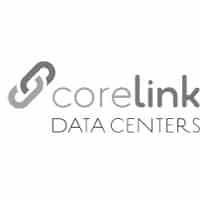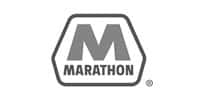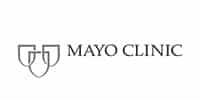The Healthcare Industry Demands Uptime
 If there has ever been a mission-critical facility that demands reliable power, it is the healthcare industry. Healthcare facilities need consistent, reliable power for a number of reasons that range from the protection of sensitive information, to cooling demands to maintain medication or lab sample usability, to power for lighting that allows for physical safety and visibility during procedures, to power the computers that contain patient medical records used for and during treatment, to the power that supplies energy to life-saving machinery. Without reliable power, any one of those things (and much more) could be compromised. When lives are at stake – that is simply unacceptable.
If there has ever been a mission-critical facility that demands reliable power, it is the healthcare industry. Healthcare facilities need consistent, reliable power for a number of reasons that range from the protection of sensitive information, to cooling demands to maintain medication or lab sample usability, to power for lighting that allows for physical safety and visibility during procedures, to power the computers that contain patient medical records used for and during treatment, to the power that supplies energy to life-saving machinery. Without reliable power, any one of those things (and much more) could be compromised. When lives are at stake – that is simply unacceptable.
Healthcare Facility Power is Failing More Often Than You Think!
Healthcare facility managers may not realize just how frequent power failures occur, particularly if a prolonged power failure has not occurred recently. But, as Eaton notes, it is not just the length of the power failure that is the problem, but the frequency as well, “ASHE compared the results from a recent survey to a prior study following Superstorm Sandy and found that while the duration of utility outages is shrinking, frequency appears to be increasing. There were 370 outages reported by 258 respondents in the recent essential electrical systems survey, versus 139 outages reported by 390 respondents during the Superstorm Sandy Survey. ASHE concluded that of the 5,686 registered hospitals in the U.S., each facility can expect to face at least one utility outage per year. The majority of these outages will last from under one hour up to 8 hours. But even in outages that last under one hour, ASHE notes that 2,497 intensive care unit (ICU) patients are likely to be impacted in potentially life-threatening ways. This data proves that, in order to ensure effective response against potential outages, it is vital to take a comprehensive view of emergency power supply systems as an integrated asset rather than focusing on just the requirements of individual components such as generators. By designing and managing these components as interworking systems, organizations are much less likely to run into issues during an outage and can better prepare their facilities to provide uninterrupted power for critical care units.”
 It is exactly because power in the healthcare industry has life-or-death stakes that the healthcare industry is constantly exploring new strategies to optimize reliable power. Schneider Electric explored how reliable power impacts the business value of a hospital and reinforces the extreme importance of reliable power in the healthcare industry, “Hospitals require extraordinary reliability from their power systems. Life- support systems, as well as critical ancillary infrastructure systems such as HVAC, communications, records management, and security must all remain online during a power disruption. The financial impact of power disruption was demonstrated during the August 2003 blackout, which affected 45 million people in eight US states and 10 million people in parts of Canada. Healthcare facilities experienced hundreds of millions of dollars in lost revenue from canceled services, legal liability, and damaged reputations. Six hospitals were in bankruptcy 1 year later. Within the healthcare market, hospitals often are called upon to provide emergency services during disaster situations. Meeting these demands requires power systems that are designed to support highly critical operations for extended durations under often difficult circumstances.”
It is exactly because power in the healthcare industry has life-or-death stakes that the healthcare industry is constantly exploring new strategies to optimize reliable power. Schneider Electric explored how reliable power impacts the business value of a hospital and reinforces the extreme importance of reliable power in the healthcare industry, “Hospitals require extraordinary reliability from their power systems. Life- support systems, as well as critical ancillary infrastructure systems such as HVAC, communications, records management, and security must all remain online during a power disruption. The financial impact of power disruption was demonstrated during the August 2003 blackout, which affected 45 million people in eight US states and 10 million people in parts of Canada. Healthcare facilities experienced hundreds of millions of dollars in lost revenue from canceled services, legal liability, and damaged reputations. Six hospitals were in bankruptcy 1 year later. Within the healthcare market, hospitals often are called upon to provide emergency services during disaster situations. Meeting these demands requires power systems that are designed to support highly critical operations for extended durations under often difficult circumstances.”
Healthcare Facilities Must Conduct Comprehensive Power Supply Demand Assessments to Determine Needs
 The key to any successful strategy to improve power reliability in the healthcare industry is to first begin with an assessment of facility needs. Unless the last assessment was within the last few months and nothing has changed, it is time to perform a new assessment because things may have changed slightly – or significantly. Even small changes can impact the demand on power and the backup power supply needs to keep healthcare facility uptime maximized. Further, all healthcare facilities have certain government codes to which they must adhere or they will be penalized. For this reason, healthcare facilities are incentivized to stay up to code as well as protect their revenue and financial stability.
The key to any successful strategy to improve power reliability in the healthcare industry is to first begin with an assessment of facility needs. Unless the last assessment was within the last few months and nothing has changed, it is time to perform a new assessment because things may have changed slightly – or significantly. Even small changes can impact the demand on power and the backup power supply needs to keep healthcare facility uptime maximized. Further, all healthcare facilities have certain government codes to which they must adhere or they will be penalized. For this reason, healthcare facilities are incentivized to stay up to code as well as protect their revenue and financial stability.
An effective and accurate assessment of power supply demand and general healthcare facility power needs should be performed by an experienced and knowledgeable healthcare power expert. Many things will be assessed including the age of healthcare power supply equipment, condition of healthcare power supply equipment, what type of backup power supply is in place, the age and condition of the backup power supply, the capabilities of the backup power supply, whether or not sufficient power redundancy is in place, adherence to code, and much more. And, while meeting code minimums and power supply minimums is important, it is ideal to go beyond minimums to increase the likelihood of maintaining continuous power in an outage. Further, an assessment can help identify areas in which continuous reliable power may not be necessary which can help conserve power during an emergency by temporarily powering down as well as allocate power to mission-critical healthcare facility components, which Schneider Electric elaborates on, “It’s also important for disaster recovery to have the right UPS products incorporated into a facility design. In hospitals, some areas such as operating theaters and intensive care units are so critical that redundant systems are needed, as well as UPSs with a high degree of fault tolerance. Other areas of the hospital, such as storage rooms, cafeterias, etc., do not have any criticality level and can be directly connected to the electrical network.”
Importance of Healthcare Facility Power Testing and Drills
Continuing, another component of any successful reliable power supply for healthcare will use the assessment to create a backup power supply plan including ordering any necessary new equipment and having that equipment installed. Once a reliable power supply is available and an adequate backup power supply is in place, it is not time to just walk away and forget about it. First, even the most well-designed healthcare power supply and backup power supply must be tested. Healthcare facilities should run a drill or test of the backup power to ensure that it not only comes on when needed but is able to supply an adequate amount of power for a prolonged period of time. This testing can bring to light other power supply needs that may not have been considered and allows a healthcare facility to ensure the best healthcare power system is not only in place but actually works.
Once an adequate healthcare power supply and backup power supply has been deployed it is important to train all pertinent individuals about the power supply, emergency protocol, maintenance, and any other areas of concern related to continuous power. All hospital staff must know what their role is and what they need to do in the event of a power failure. Healthcare facilities often employ hundreds and even thousands of staff which means there may often be new staff. For this reason, it is ideal to run periodic drills to test and teach hospital staff what to do in the event of a power failure.
Consistent Routine Maintenance Key to Maximizing Healthcare Facility Power Reliability
 The component of a strategy to maximize reliable power in the healthcare industry is to have a maintenance plan in place. Healthcare power supply maintenance is a critical component of maximizing uptime because without proper maintenance, power supply, and UPS components may wear out too quickly or fail. Maintenance not only maximizes the life of power supply components but allows facility managers to spot potential power supply problems before something happens and potentially prevent an outage altogether. Healthcare Facilities Today emphasizes the importance of having a comprehensive power supply maintenance plan in place in a healthcare facility, “Maintain foundational electrical systems: Implementing a strategy in which electrical system maintenance is routinely performed provides long-term ROI by helping avoid potential system failures. Maintenance strategies can be aided by implementing technologies like building management systems (BMS) that help to monitor building performance by collecting and analyzing data from electrical, HVAC, security and IT systems to improve reliability and efficiency. Additionally, modernizing aging electrical gear can guard against the risks to continuity of services and power reliability that older, out-of-date equipment can present.”
The component of a strategy to maximize reliable power in the healthcare industry is to have a maintenance plan in place. Healthcare power supply maintenance is a critical component of maximizing uptime because without proper maintenance, power supply, and UPS components may wear out too quickly or fail. Maintenance not only maximizes the life of power supply components but allows facility managers to spot potential power supply problems before something happens and potentially prevent an outage altogether. Healthcare Facilities Today emphasizes the importance of having a comprehensive power supply maintenance plan in place in a healthcare facility, “Maintain foundational electrical systems: Implementing a strategy in which electrical system maintenance is routinely performed provides long-term ROI by helping avoid potential system failures. Maintenance strategies can be aided by implementing technologies like building management systems (BMS) that help to monitor building performance by collecting and analyzing data from electrical, HVAC, security and IT systems to improve reliability and efficiency. Additionally, modernizing aging electrical gear can guard against the risks to continuity of services and power reliability that older, out-of-date equipment can present.”
Any strategy to maximize power reliability in a healthcare facility will be multi-faceted and there will be no end or ‘completion’ of the strategy because maintenance and assessments will always be needed to ensure adequate backup power is available in the event of a failure. As the Internet of Things (IOT) continues to consume our daily lives it also consumes healthcare facility operations. Almost all healthcare facility operations are dependent on power and most are dependent on reliable and continuous power. It is in the best interest, legally and financially, to have a comprehensive power supply system assessment, adequate power, and backup power supply in place, and continuous maintenance and drills because each of those things will maximize power reliability and uptime in healthcare facilities.





























